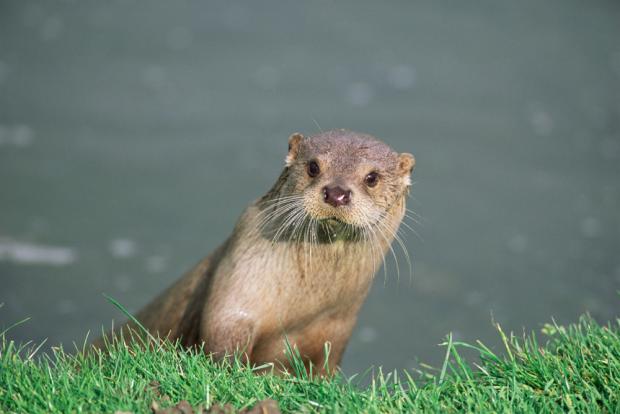The area is of special scientific interest because of the physical features of the river and its associated riverine flora and fauna. The Glenballyemon River is a short sinuous river, which rises on the Antrim Plateau near Glenariff Forest Park. It has a relatively small but steep catchment most of which is unforested mountainside. Fast flowing, this spate river is characterised by sequences of riffles, runs and pools where its gradient is shallow and the river beds are composed of cobbles, with scattered boulders and sandy margins.Where the gradient is steep and the bed is composed of bedrock and boulder the flow is more dramatic with rapids, cascades and waterfalls.
Towards its headwater on the plateau the river is fast flowing and dynamic with rapids, riffles and several small waterfalls. The channel substrate is composed of bedrock and liverwort species such as water earwort and compressed flapwort are the dominant aquatic species.
The river descends precipitously off the plateau through a series of three very large falls along a steep bedrock gorge. The channel substrate has a mixed geology of basalt and limestone, which has allowed calcareous caverns and caves to be formed at the bottom of falls. Channel macrophytes are restricted to bryophytes, particularly long-beaked water feather-moss. The banks are extremely high, steep and wooded with species such as rowan, willow, ash, hazel, hawthorn, sycamore, alder and downy birch.
Further downstream the gradient decreases and the predominant land use is semi-improved pasture. In this mid-reach section of the river the channel meanders and the banks are extensively wooded. The channel substrate is composed of basalt and limestone cobble, boulder and bedrock. The flow regime is dynamic and characterised by rapids, falls and deep pools. The river drops in a series of falls and cuts through steep areas of gorge. Bryophyte cover is often limited due to the size and instability of the channel substrate. Calcareous rocks tend to be dominated by the crustosa red alga and the blue-green alga. The banks and wet margins are vegetated by the liverworts great scented liverwort, overleaf pellia and the mosses fox-tail feather-moss and rusty feather-moss. Sandy marginal deposits and cobble side and point bars are common channel features.

Related articles
- ASSI Guidance for Public Bodies/Competent Authorities
- Coastal Areas of Special Scientific Interest
- Conservation Management Plans (CMPs)
- European Marine Sites - Marine Special Areas of Conservation and Special Protection Areas
- Introduction to Conservation Management Plans (CMPs) for Northern Ireland’s Special Areas of Conservation
- Marine Conservation Zones
- Marine Protected Areas
- Marine Ramsar sites
- Portrush Coastal Zone
- Special Areas of Conservation
- Special Areas of Conservation for Harbour porpoise
- Special Protection Areas
